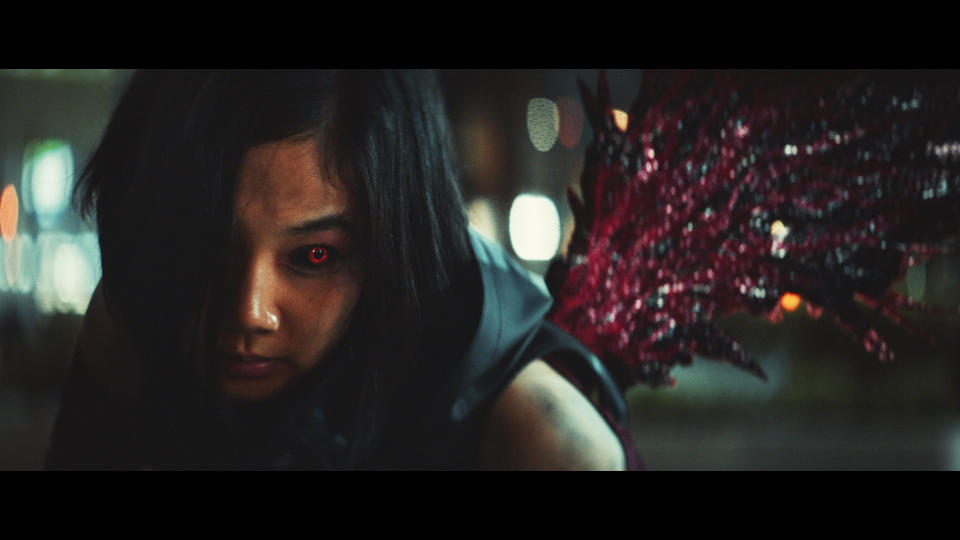Review: ‘Tokyo Ghoul’ is gripping but feels unfinished

Secret ending? No.
Running time: 120 minutes (2 hours)

“Tokyo Ghoul” is an science-fiction action horror film based on the “Tokyo Ghoul” anime and manga franchise.
The film reveals the existence of super-powered beings called ghouls, who hide amongst humans. When an unwitting victim somehow becomes part ghoul and part human, he must learn to navigate the delicate politics between ghouls and the humans who want to hunt them down.
“Tokyo Ghoul” is directed by Kentaro Hagiware. It stars Masataka Kubota (Ken Kaneki), Fumika Shimizu (Touka Kirishima), Noboyuki Suzuki (Kotaro Amon), Yo Oizumi (Kureo Mado), and Yu Aoi (Rize Kamishiro). It is rated NC-16.

“Tokyo Ghoul” takes a unique approach to the trope of superhumans hidden amongst humanity by avoiding the standard black-and-white, good vs evil plots that are often used in such genres. Each faction (or species) has characters that range across the moral spectrum, such that you can’t definitely state that one side is “good” or the other is “evil”.
It also attempts to explore the perspectives of each faction and the difficulties they face, although it’s only a small part of the film. “Tokyo Ghoul” takes a more ambiguous look at such conflicts, and as such feels like a metaphor for real world situations.

Highlights
Masataka Kubota delivers a good character performance as Ken Kaneki
While Masataka Kubota looks too mature for the character (he’s only 29 though), he conveys the helplessness and frustration felt by protagonist Ken Kaneki very convincingly. We feel his sense of confusion thanks to the lack of exposition in the film, and his mounting desperation as he attempts to find out what has happened and what is “wrong” with him. His angst is fully warranted, which is what makes it so visceral for audiences.

Intense and gripping
“Tokyo Ghoul” is pretty serious in tone, although it does inject attempts at humour every so often. As a result, every event that occurs feels like it is momentous and earth-shattering, even when it comes to more everyday happenings like a simple meal by a child ghoul.
Even though it’s dark and grim, it doesn’t end up being saturated with hopelessness, the way other dark fantasy films are. What results is an intense series of events that come to a painful, but gripping climax.

Evocative action sequences
The ghouls in the show all have special powers derived from their “kagune”, which means that the ghoul battles are rife with special effects. The dark nature of the film means that the kagune often look like mutated entrails, which lends a fantastic but nauseous feel to the battles. However, the ghouls don’t only rely on their kagune to fight — regular melee combat is also mixed in with the CGI effects.

Letdowns
Lacks exposition
The huge issue with “Tokyo Ghoul” is that it assumes that audiences are fans of the franchise, and hence understand all the series-specific jargon that come along with it. Thus, it uses such terms as part of everyday speech without explaining what they mean, leading to some frantic online searches to understand what the characters are saying.
Terms like quinque (the weapons that the ghoul hunters use, made from the kagune of defeated ghouls) and kakuhou (the organ that gives the ghouls their super powers) are bandied about without context, making it difficult to follow at times.

Special effects are inconsistent
The animation of the kagune is ambitious and creative, but it also differs greatly in quality at times. They’re fluid when in motion, but static shots of the kagune look artificial. Some elements also just don’t translate well into a live action movie, such as Amon’s quinque (the weapon of one of the ghoul hunters). It looks like a giant rolling pin in action, rather than the fearsome and foreign weapon it should be.

Feels incomplete
“Tokyo Ghoul” is supposed to be a standalone film that presumably kicks off a “Tokyo Ghoul” series of films. Thus it includes many setups for future films — setups that are not resolved in the film itself. It feels incomplete, like it should have had a longer running time.
Given the swath of source material it had to draw upon, it’s understandable that many elements had to be included in the film. It should have followed the two-parter format that other anime adaptations like “Parasyte” or “Attack on Titan” used, rather than attempting to cram it all in one film.

“Tokyo Ghoul” is exciting without going down the standard format of having clear cut good guys and bad guys, and much of its appeal comes from how much humanity the ghouls have. However, it necessitated more closure than is currently in the final product, leaving you feeling like something’s missing from the film.
Should you watch this at weekday movie ticket prices? Yes.
Should you watch this at weekend movie ticket prices? If you’re a fan of “Tokyo Ghoul”.
Score: 3.5/5
“Tokyo Ghoul” opens in cinemas:
– 24 August, 2017 (Singapore)
Marcus Goh is a Singapore television scriptwriter, having written for “Police & Thief”, “Incredible Tales”, “Crimewatch”, and “Point of Entry”. He’s also a Transformers enthusiast and avid pop culture scholar. You can find him on social media as Optimarcus and on his site. The views expressed are his own.
Read also:
Review: ‘Attack on Titan’ captures the spirit of the franchise
Review: ‘Parasyte Part 2’ is an intense and grim ending for the franchise
Follow Yahoo Lifestyle Singapore on Facebook.



